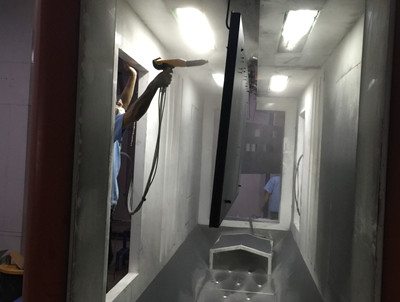Introduction to Surface Treatment Technology
1)What is surface treatment?
Surface treatment: change the shape, chemical composition and organizational structure of the product surface and near surface area by the most economical and effective method, effectively improve and improve the decorative performance, corrosion resistance and wear resistance of the product, and prolong the service life of the product.
Common surface treatment: electroplating, electroless plating, conversion film technology, physical vapor deposition, chemical vapor deposition, thermal spraying, hot dip coating, sand blasting, chemical conversion, anodic oxidation, coating, etc.
Surface treatment technology can also endow the material surface with various optical, electrical, magnetic, thermal, acoustic, chemical and functional conversion characteristics.
- Surface technology of various light mirrors; Anti reflective;
- Various electrical surface technologies: insulated silver plating, gold and copper; Conductive are protected with plastic;
- Various magnetic surface technologies: stealth technology;
- Hot surface technology: infrared, infrared absorption and heat protection;
- Acoustic surface technology: anti sonar;
- Chemical: galvanized steel.
2)Types of surface treatment:
Surface treatment can be divided into: protective surface treatment, such as electroplating, oxidation (chemical oxidation, electrochemical oxidation) and decorative surface treatment (such as coating and functional surface treatment). Generally speaking, there is no obvious boundary, and its main purpose is to prolong the service life of products and save and utilize resources to the greatest extent.
3)Why should surface treatment be carried out in sheet metal processing?
- Most of the materials used in sheet metal processing are cold-rolled plate, hot-rolled plate, electrolytic plate, white iron, stainless steel, aluminum alloy plate, profile, copper, etc. these materials are exposed to the atmosphere and will have electrochemical reaction after full contact with moisture and oxygen in the air, resulting in material surface corrosion. At the same time, the contact between materials with different physical and chemical properties will also form primary cells due to the potential difference between each other, This causes contact corrosion. In order to avoid the corrosion of materials in various processing procedures and finished products in storage and use during sheet metal processing, the corrosion of materials and finished products in storage and use are controlled by surface treatment during production. The corrosion is controlled by surface treatment of materials in production, so as to save resources and production costs.
- When various materials are transformed into commodities through sheet metal processing, in order to meet the needs of customers and give people visual beauty, the product appearance is subject to various surface treatments, such as electroplating, oxidation, etc. any further doubt, please click here to contact us.
Leave a Reply